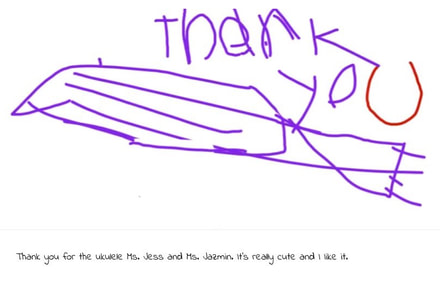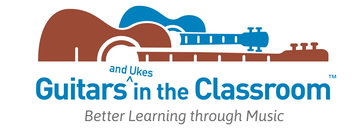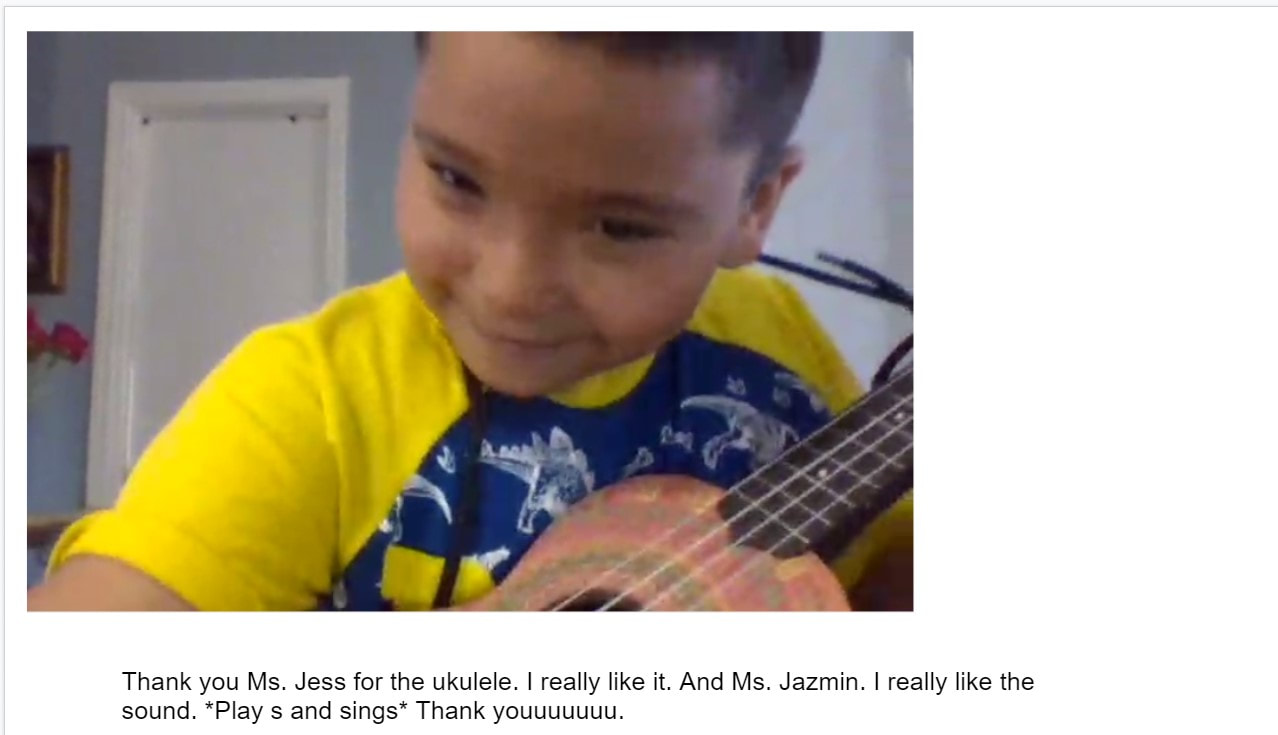|
Blog contributed by GITC Executive Director, Jess Baron San Diego, CA July 27, 2020 It's the end of July now, but back in late January, 2020, I began meeting meeting with the leadership of SAGE Magnet, a first-of-its-kind middle school named for promoting Sexual and Gender Equity that resides inside the larger Millikan Middle School in Sherman Oaks, California. We were meeting to explore designing a teaching artist residency to teach 6th grade students about social justice through making music. SAGE's mission is to provide opportunities for all students to become self-motivated, life-long learners in a safe environment where students are encouraged to become self-reliant and disciplined citizens. The school promotes academic and character development and fosters individuality, creativity, and teamwork. Mr. Joseph Porter, the SAGE Magnet Coordinator, had an inspirational vision to teach SAGE students how social change can be brought about in different ways. In alignment with the mission of the school, he wanted students to understand how working towards social justice can go beyond attending rallies and protests in the streets, chanting and carrying signs. He wanted to teach these sixth graders to discover the power of music to move hearts and minds toward justice. When we met, introduced by Shana Habel in the L.A.U.S.D. Arts Branch, there was no turning back. GITC has been sharing music from the Civil Rights Movement with teachers for 20 years. It couldn't have been a more natural setting in which we could bring music to learning. We began planning these music integration classes for the students at SAGE 7 weeks before the Coronavirus began turning life as we knew it into a fond memory. The plan was to teach voice, ukulele, songwriting and group music in service of encouraging students to use their own voices to become agents for social change. Little did we know we'd need to overcome technical hurdles galore to make it happen. But everyone hung in there- parents, teachers and students- and with leadership from Mr. Porter, we figured out how to create inclusive, authentic, student-centered instruction, even though we were all separated and could only see each other inside of little rectangular boxes. The project had been set to take place in person at the school, but when schools closed and teachers and students went home to shelter in place, we immediately pivoted the project to conduct the classes online over ZOOM. GITC sent instruments for students to Los Angeles and participating families picked them up safely from the porch of the SAGE parents foundation's president. The design of the project included 10 weekly group music lessons revolving around learning about social action for civil rights that included music, and instruction in singing, playing and writing additional lyrics. This allowed sixth grade students to connect current advocacy for justice with the history of change. Classes started well before the tragic murder of George Floyd sparked international uprisings to protest police brutality against Black Americans, bringing #blacklivesmatter to the forefront of public conversation and into the heart of vibrant, widespread social action. When people began taking to the streets, SAGE students were already studying the power of music to change hearts, minds and policies when they began seeing civil protest in action on their screens. The project became more real and important to students as they began coping with the complexity and seriousnes of the situation. "This Little Light of Mine" was chosen as a focus song for the class because it is simple, powerful and positive and is recognized as one of our nation's most jubilant and effective civil rights anthems. Today, demonstrators still leverage its message to push back against injustice. Mr. Porter's guidance and direction to students to study the history of the song and its role in civil protest was critical to the success of the project. In fact, highlighted in the SAGE video is footage of Reverend Osagyefo Sekou who used "This Little Light of Mine" to curb passions during a counter-protest, before a crowd of white supremacists and alt-right supporters gathered for the Unite the Right rally in Charlottesville, Virginia. The students speak to this use of song to combat violence with compassion and unity. Mr. Porter explains the heart of this collaboration. “For this specific project, I wanted to teach SAGE students how songs and singing have been used as successful tools for voicing specific needs for change throughout the history of social justice,” he says. “I feel it is important for them to know about the history of the traditional protest songs- who wrote, led and sang them, and when, where, and how they have been most effective in promoting non-violent movements for justice. To top it all off, I wanted the students to actually learn how to play and sing those same songs.” In addition to teaching the traditional lyrics, as the music teacher with the beginning students, GITC's hallmark student songwriting was woven into the class. Students composed their own verses of resilience to “This Little Light of Mine.” This allowed students to use the song to reflect on where resilience in their lives comes from. Students identified the positive activities they could engage in to uplift and encourage themselves despite the risks and losses caused by the spread of the Coronavirus. Each created a personal line or verse to the song. Together the old and new lyrics provided SAGE students with a way to help themselves and others.  The project was made possible through a generous grant from the Rosenthal Family Foundation. Monica Rosenthal, an enthusiastic supporter of SAGE got directly involved with the project, attending class with Mr. Porter and the students. Her presence added extra enthusiasm and energy to the music making. Thanks to their own determination and a supportive learning environment, SAGE students found learning about social justice through making music to be an engaging experience. Their attendance online was excellent. The end result was a team process, involving the classroom participants, GITC staff and SAGE family members who supported the students to practice and to make their own videos and wonderful leadership. "This truly was the result of the village all joining hands to lift up its children,” Mr. Porter explains. ”Together, the adults worked to encourage and empower these dedicated students to shine their lights with intention and clarity into our world during a pivotal moment in history and these kids came through wiser, more musical and empowered. We share this project with great gratitude to Mr. Porter, Ms. Habel, LAUSD's Arts Education Branch, and to the Rosenthal Family Foundation and Ms. Monica who made all our lives brighter by joining the class. Now, one parting shot. Please enjoy this little backyard recording Mr. Porter, a new musician himself, made to contribute to the overall class piece. Each time I listen to Mr. Porter's voice, I wonder how on earth he has escaped stardom!
1 Comment
 Some teachers go the extra mile -- literally. Francesca Miller is one of those teachers. When the pandemic hit and Ms. Miller’s kindergarten students transitioned to distance learning, she wasn’t ready to let go of the music they’d been making together in the classroom. Instead, she organized multiple Guitars and Ukes in the Classroom (GITC) socially-distanced Porch Pickups℠ so that her students could safely pick up free ukuleles to strum and sing along with their teacher from home. If families were unable to make the trip, she literally went the extra mile and dropped instruments off at their homes. Now her students, who are on a year-round academic calendar, play music daily as part of their distance learning curriculum. Ms. Miller reports that the ukuleles and interactive music making continue to have a profound impact.  Ms. Miller (Right) greets a family at a GITC Porch Pickup℠ Ms. Miller (Right) greets a family at a GITC Porch Pickup℠ “Some students weren’t showing up to classes online at all, but the ukulele brought them back,” Ms. Miller explains. “It’s like that line from Field of Dreams...If you play it, they will come. Even if they are not turning in any assignments, they will come to class for the music.” Ms. Miller is no stranger to using music as a tool in the classroom. Even before she joined GITC in 2015, she started every class playing songs from a carefully crafted mixtape. But it was GITC that gave her the encouragement and the training she needed to do something she’d always dreamed of -- learn to play the guitar.  We KNOW these students are smiling under their masks! We KNOW these students are smiling under their masks! “I had my guitar but I wasn’t playing it. I like to say it had a really nice place hanging on my wall,” jokes Ms. Miller. “But then my principal at the time sent out an email about GITC, saying we could learn to play guitar and incorporate music in the classroom, and I said to my friend who was also a teacher, ‘Let’s do this!’ We took the class together and it was great because I really felt like I was on the verge of something.” Turns out she was on the verge of something greater than she’d imagined. With GITC’s support, Ms. Miller learned how to play ukulele and guitar; she also equipped her classroom with ukuleles to share at school and began strumming, singing, and writing songs for learning with her students. She saw positive effects almost immediately. “My favorite part was the songwriting,” she explains. “Something would happen at school and the kids would spontaneously say, ‘We should write a song about it!’ They were so excited and engaged.” Ms. Miller remembers one student in particular who was profoundly affected by the music. “I had a student in my class in Transitional Kindergarten (TK) and he had lots of absences. His mother didn’t want to send him to school if he didn’t want to go, so he rarely came,” she explains. TK students are 48-60 months old.  A thank you note from a grateful student A thank you note from a grateful student The following year she had him as a student again, this time in Kindergarten, and this time she was equipped with her GITC training and tools, including her own new ukulele! “Adding the ukulele changed everything,” she explains. “He would be the first one at the rug, ready and attentive. He was excited and alert. And when we first put that uke in his arms, he held it and looked like a master -- he had rhythm immediately!” He also attended school more regularly and became a more active participant in class. “I truly believe the ukulele contributed to him becoming more verbal in class. [Before the uke] he would talk with his hands in his mouth or spin and dance while speaking. After the uke, he learned to keep his hands by his side and to speak in a loud, clear voice,” says Ms. Miller. “Music is a language that everyone speaks and it reached him.” Music continues to reach Ms. Miller’s students as they explore the new realm of online learning. Although the class is currently strumming together online daily thanks to GITC board advisor, Jasmin Powell, who “adopted” the class and provided ukes for home, Ms. Miller hopes to devote one full day a week to the ukulele. She has of course encountered a few challenges -- Zoom delays, video that freezes, and students who can’t resist fiddling with the uke tuners -- but overall she views music as her greatest tool during this national crisis. “I can see it literally waking up their brains,” she explains. “I can see it shining out of their eyes, like laser beams!” Don't believe us? Check out the personalized thank you notes below! |
BlogArchives
June 2024
Categories
All
|
Copyright © 2024 Guitars In The Classroom. All rights reserved.








 RSS Feed
RSS Feed